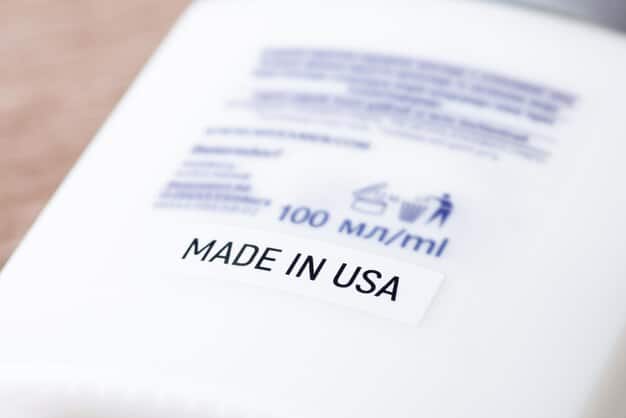Trump Administration’s IP Policies: Protecting US Innovation?

The Trump Administration’s policies on intellectual property aimed to strengthen protection for US innovation by enhancing enforcement against infringement, particularly from China, to foster economic growth and competitiveness.
The Trump Administration’s policies on intellectual property: How are they protecting US innovation? This question has been at the forefront of discussions surrounding US economic strategy. Let’s delve into the specifics.
Trump Administration’s Approach to Intellectual Property
The Trump Administration took a multifaceted approach to intellectual property (IP), focusing on enforcement, international trade, and domestic policy adjustments. This strategy aimed to safeguard American innovation and ensure fair competition in the global market.
Emphasis on Enforcement
A key component of the Trump Administration’s IP strategy was a strong emphasis on enforcement, both domestically and internationally. This involved increasing resources for agencies responsible for protecting IP rights and pursuing legal action against infringers.
Combating Counterfeiting
The administration also prioritized efforts to combat the spread of counterfeit goods, which not only harm legitimate businesses but also pose risks to consumer safety.
- Enhanced border controls to intercept counterfeit products.
- Increased cooperation with international partners to disrupt global counterfeiting networks.
- Stiffer penalties for those involved in the production and distribution of fake merchandise.
The Trump Administration believed that robust enforcement was crucial for deterring IP theft and creating a level playing field for American businesses.
In summary, the Trump Administration’s approach to intellectual property centered around enhanced enforcement, both domestically and internationally, with the goal of protecting American innovation and maintaining a competitive edge in the global market. This multifaceted strategy aimed to deter IP theft, combat counterfeiting, and ensure fair competition, ultimately fostering economic growth and safeguarding consumer interests.

Focus on China and Intellectual Property Theft
A significant aspect of the Trump Administration’s IP policy was its focus on China. The administration accused China of widespread intellectual property theft and unfair trade practices, leading to trade tensions and policy changes.
Section 301 Investigation
The administration launched a Section 301 investigation into China’s IP practices, which concluded that China engaged in policies and practices that were unreasonable and discriminatory.
Tariffs and Trade Negotiations
Based on the findings of the Section 301 investigation, the Trump Administration imposed tariffs on billions of dollars worth of Chinese goods.
- Tariffs aimed to pressure China to change its IP practices.
- Trade negotiations sought to secure commitments from China to better protect American IP.
- The administration also took steps to restrict Chinese access to certain US technologies.
The administration’s actions towards China reflected a broader effort to address what it viewed as systemic IP theft and unfair competition. The focus was to hold China accountable and establish a more equitable trade relationship.
The Trump Administration’s focus on China concerning intellectual property theft was a defining feature of its trade policy. Through investigations, tariffs, and trade negotiations, the administration sought to address what it viewed as systemic IP theft and unfair practices, with the ultimate goal of establishing a more balanced and equitable trade relationship between the two countries.
Impact on Patent Law and Innovation
The Trump Administration’s policies also had implications for patent law and innovation within the United States. Changes were made to streamline the patent process and encourage innovation.
The administration took steps to streamline the patent process and reduce the backlog of patent applications.
Promoting Efficiency
Efforts were made to make the patent system more efficient and predictable, which could encourage inventors and businesses to invest in research and development.
Protecting Patent Holders
The administration also sought to strengthen the rights of patent holders, making it more difficult for others to challenge the validity of patents.
- Appointments of judges with a pro-patent stance to the federal circuit court.
- Changes in the guidelines for patent examination.
- Support for legislation aimed at curbing patent trolls.
Many believed that strengthening patent rights would spur innovation and economic growth by providing inventors with greater incentives to create and commercialize new technologies. However, some critics argued that such policies could stifle competition and raise prices for consumers.
In conclusion, the Trump Administration’s policies had a notable impact on patent law and innovation in the United States. By aiming to streamline the patent process and strengthen the rights of patent holders, the administration sought to spur innovation and economic growth. These changes were designed to encourage investment in R&D and provide inventors with greater incentives, although some critics cautioned about potential negative impacts on competition and consumer costs.
Trade Agreements and Intellectual Property
Intellectual property rights were a key component of the trade agreements negotiated by the Trump Administration. These agreements sought to establish stronger IP protections in foreign countries.
USMCA
The United States-Mexico-Canada Agreement (USMCA), which replaced NAFTA, included provisions aimed at strengthening IP protections in North America. The agreement was designed to ensure that American innovators and creators receive adequate protection for their IP rights in Mexico and Canada.
Bilateral Agreements
The administration also pursued bilateral trade agreements with other countries, often including provisions related to IP protection. These agreements sought to address specific IP concerns and improve enforcement in those countries.
By making IP protection a priority in trade agreements, the Trump Administration aimed to create a more favorable environment for American businesses operating abroad.
In conclusion, the Trump Administration made intellectual property rights a key element of its trade agreements, including the USMCA and other bilateral deals. By incorporating provisions that strengthen IP protections in foreign countries, the administration aimed to create a more advantageous environment for American businesses operating internationally, ensuring that their innovations and creations are adequately protected and that they can compete fairly in the global market.

Criticisms and Controversies
The Trump Administration’s IP policies were not without their critics and controversies. Some argued that the administration’s aggressive approach to trade and IP could harm international relations and disrupt global supply chains.
Impact on Consumers
Some critics said that tariffs and other trade restrictions could raise prices for consumers and harm American businesses that rely on imported goods. They also claimed that the administration’s focus on enforcement could stifle innovation and limit access to new technologies.
International Relations
The administration’s confrontational approach to trade also strained relations with some of America’s closest allies. Some countries viewed the administration’s actions as protectionist and undermining the multilateral trading system.
Despite these criticisms, supporters of the administration argued that its policies were necessary to protect American interests and level the playing field in international trade. They also claimed that the administration’s actions were having a positive impact on the US economy.
Concluding, the Trump Administration’s IP policies faced various criticisms and controversies, with concerns raised about the potential harm to international relations and global supply chains. Critics argued that tariffs and trade restrictions could increase consumer prices and stifle innovation, while straining relationships with key allies. Despite these concerns, supporters maintained that the policies were essential for safeguarding American interests and creating a level playing field in international trade, asserting a positive impact on the US economy.
Future of Intellectual Property Protection
The policies and precedents set by the Trump Administration could have lasting implications for the future of intellectual property protection in the United States and around the world.
Changing Landscape
The focus on enforcement, trade agreements, and domestic policy adjustments have reshaped the landscape of IP protection. Future administrations will need to consider these changes as they formulate their own IP strategies.
Evolving Priorities
The ongoing debate over IP protection and trade will likely continue for years to come. Finding the right balance between protecting IP rights and promoting innovation and competition will be a key challenge for policymakers.
Whether the Trump Administration’s IP policies will be viewed as a success or a failure remains to be seen and the future trajectory of IP protection will be shaped by these ongoing debates and evolving priorities.
In conclusion, the policies and precedents established by the Trump Administration have the potential for significant, long-term impacts on intellectual property protection both in the United States and globally. As priorities evolve and debates continue, future administrations will face the challenge of balancing IP rights with the promotion of innovation and competition. The ultimate success or failure of the Trump Administration’s IP policies hinges on these ongoing discussions and the ability to adapt to a changing landscape.
| Key Point | Brief Description |
|---|---|
| 🛡️ Enforcement Focus | Emphasis on domestic and international IP enforcement. |
| 🇨🇳 China Tariffs | Imposed tariffs on Chinese goods due to IP theft. |
| 🤝 Trade Agreements | Included IP provisions in USMCA and other trade deals. |
| 📜 Patent Law | Streamlined patent processes and strengthened patent rights. |
FAQ
▼
The main focus was on enhancing enforcement against intellectual property theft, particularly from China, to protect US innovation and ensure fair trade practices.
▼
The administration launched a Section 301 investigation, imposed tariffs on Chinese goods, and pursued trade negotiations to address IP theft.
▼
The administration streamlined the patent process, reduced the backlog of applications, and sought to strengthen the rights of patent holders.
▼
Trade agreements like USMCA included provisions to bolster IP protections in foreign countries, aiming to create a more favorable environment for US businesses abroad.
▼
Critics argued that the policies could harm international relations, disrupt global supply chains, and raise prices for consumers due to tariffs and trade restrictions.
Conclusion
In summary, the Trump Administration’s policies on intellectual property represented a significant shift towards stronger enforcement and protection of US innovation. These policies, while controversial, have set the stage for ongoing debates about the balance between protecting IP rights and fostering global trade.





